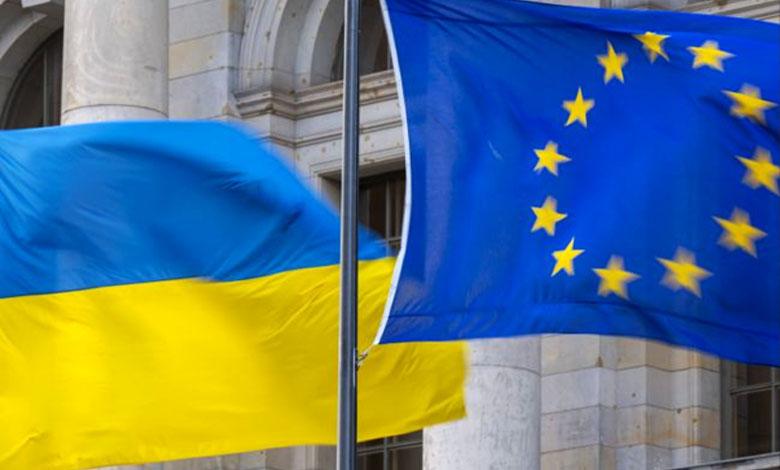Billions for Ukraine: Is It A Little or a Lot? Answer in percentage

During the three years of the war, donor countries steadily supported Ukraine, allocating an average of about 80 billion euros every year. Since 2022, European countries have become the main source of aid, especially in the financial and humanitarian spheres. An important trend is currently observed: more and more attention is paid to the supply of weapons. If at the beginning of the war, military aid mostly came from the existing reserves of the donor countries, then over time these resources were gradually exhausted. Today, most military supplies consist of newly developed weapons from Western defense companies, as well as multilateral arms supply initiatives.
These changes can be traced in the updated data of the Ukraine Support Tracker, which illustrates international aid up to and including December 2024. The figures indicate that support to Ukraine is becoming more structured and strategic in nature, focusing on the long-term strengthening of our country’s defense capabilities.
Big numbers aren’t that big
Despite the significant numbers, in relation to the economies of the donor countries, this support looks quite modest. For example, Germany, Great Britain, and the United States spent less than 0.2% of their annual GDP on aid to Ukraine, while France, Italy, and Spain spent only about 0.1%. For comparison, even individual domestic programs cost countries much more. For example, diesel tax subsidies in Germany alone cost taxpayers three times more than military aid to Ukraine.
As Christoph Tröbesch, manager, notes Ukraine Support Tracker at the Kiel Institute, if we compare these figures with the budget expenditures of the governments of European countries, it will become obvious that the support of Ukraine, despite all its importance, remains rather a separate political project than a large-scale fiscal effort.
Europeans help the most
The study concludes that, in general, Europe has already overtaken the USA in terms of the total amount of support for Ukraine. This suggests that European countries are taking on a growing role in providing financial, military and humanitarian aid, especially amid uncertainty about future support from Washington.
Infographic: IA “FACT”
It will be recalled that the role of US aid to Ukraine began to decline in mid-2023, as Congress blocked the adoption of new support packages for nine months. While U.S. aid has picked up again in recent months, analysts warn that with Donald Trump’s return to power, U.S. military support is likely to end again. This will mean that European countries will have to step up their efforts to compensate for the loss of such an important donor, says Christoph Trebesch.
Recent research also suggests that warfare is increasingly dependent on the capabilities of the defense industry. If at the beginning of the invasion, military aid to Ukraine consisted mainly of weapons that were already in the arsenals of partner countries, now due to the protracted nature of the conflict, an increasingly large amount of weapons comes directly from manufacturers.
Infographic: IA “FACT”
Not only billions are important, but also percentages
When evaluating international aid to Ukraine, it is worth looking not only at the absolute numbers, but also at their relative size in relation to the donor economy. It is the percentage of a country’s GDP that shows the true weight of support: large economies may allocate billions, but this does not always mean that their contribution is the most burdensome on the budget.
Recall that GDP (gross domestic product) is the aggregate market value of all goods and services produced in the country for a certain period. It is this indicator that is most often used to assess the economic power of the state, and the percentage ratio of aid to GDP allows us to understand how significant the contribution of a particular country is.
For example, the USA provided Ukraine with a huge amount – 114.15 billion euros, but this is only 0.53% of their GDP. Instead, Estonia allocated a much more modest amount of 0.76 billion euros, but this figure represents an impressive 2.2% of the country’s GDP. Other Baltic states also make a significant contribution: Lithuania – 1.8% of GDP (1.11 billion euros), Latvia – 1.53% of GDP (0.57 billion). Denmark, although smaller in population than Germany or Great Britain, provided Ukraine with 8.05 billion euros, which is equal to 2.17% of its GDP.
For comparison, Germany and Great Britain, which are among the main donors, allocated 17.26 billion euros (0.44% of GDP) and 14.81 billion euros (0.51% of GDP), respectively. Poland, being a neighbor of Ukraine, sent 5.03 billion euros, which is 0.8% of its GDP, and the Netherlands – 7.33 billion euros (0.78% of GDP).
Infographic: IA “FACT”
Thus, aid from different countries looks quite different if you evaluate it in proportion to economic opportunities. Small states donate significantly more relative to their resources, which emphasizes not only their solidarity, but also their true commitment to supporting Ukraine.
At present, support to Ukraine largely depends on political changes in donor countries. In particular, elections will be held in Germany in a week. This creates uncertainty: every election or budget crisis can significantly affect aid flows. At the same time, European states are already looking for mechanisms to ensure more stable financing.





